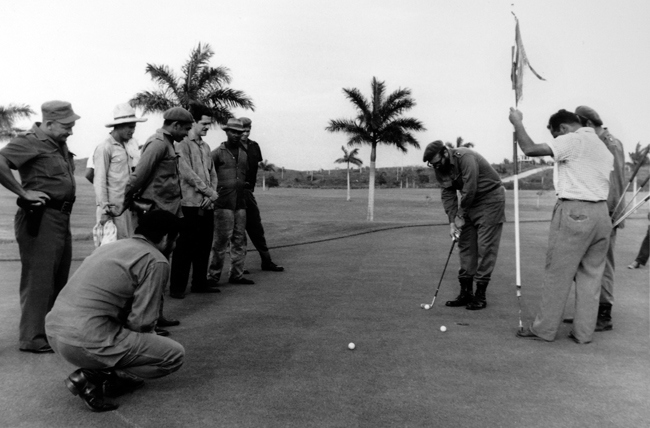
http://ndapak.com/412-mw-rouch-thermal-power-plant-kot-addu/ Fidel Castro and Che Guevara, Havana, 1961 or 1962.
In 2009, Hugo Chávez, who may or may not still be the president of Venezuela, dismissed golf as a “bourgeois sport.” A U.S. diplomat—clearly not a golfer himself—called Chávez’s statement “a mulligan.” (The annoying use of golf terminology for putatively humorous purposes is apparently irresistible; the Wall Street Journal described Chávez’s remarks as “ahem, par for the course.”) Chávez is a socialist revolutionary, a quasi-dictator, an American antagonist, a supporter of Iran, and, often, a buffoon. Nevertheless, it’s hard to argue with his main contention, which was that lush fairways are not the highest and best use of scarce real estate in places that lack even minimal housing for many impoverished residents.
Hard, but not impossible. In the late nineties, David Plotz, who is now the editor of http://shinyfastandloud.com/wp-content/plugins/seoplugins/mar.php Slate, suggested that golf might be a promoter of world peace. “Countries where golf is popular,” he wrote in the New York Times, “never fight other golfing nations—and don’t fight much at all—while countries without golf are strikingly belligerent.” The United States is an obvious exception, although, historically, we have focused our aggression on countries where golf is unknown, and on non-playing tyrants like Slobodan Milosevic, Osama Bin Laden, and Saddam Hussein. A commitment to golf-course construction, furthermore, has emerged as an important step in the rehabilitation of our former arch enemies, among them Russia, China, and North Vietnam. Will Baghdad, Kabul, and Pyongyang become prime American buddies-trip destinations a decade or two hence? We can only hope.
The explanation for golf’s pacific associations isn’t hard to understand. In fact, Chávez himself identified it: golf is a bourgeois sport. A country that embraces golf is a country that has reached a tranquil, non-belligerent middle age. Jihad is a young man’s game. You can foment revolution or you can fight your slice—life is too short for both. Fidel Castro and Che Guevara (who had played as a child in Argentina) famously posed on a putting green (in fatigues) in 1961 or 1962, but they weren’t really playing a match. And Castro showed what he really thought about golf by bulldozing Havana Country Club.
A passion for golf suggests a certain maturity of judgment, as well as a willingness to get along with others. A little more popularity for the game could be just what the world needs.

Not only does golf promote world peace, it also can serve as a positive force in affecting social reform.
Sarah Norcliffe Cleghorne published a poem in the New York Tribune in 1914 that revolutionized our labor laws:
The golf links lie so near the mill
That almost every day
The laboring children can look out
And see the men at play.
Thanks to this poem, conditions like these are no longer tolerated. Today, society has ensured that factories employing child labor are established far from golf courses, to avoid these pitiful situations. One never knows when one of the little whelps might scream out some indecency during the execution of one’s swing.